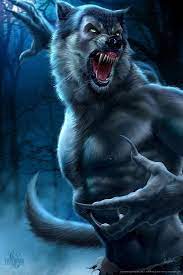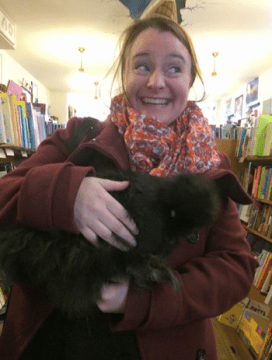Photo by Analise Lawson
Jennifer Chambliss Bertman is the New York Times best-selling author of the Book Scavenger
Series, fun and exciting middle-grade mystery stories.
Her latest, The Sisterhood of Sleuths, a stand-alone novel, walks readers through the mysteries of
friendship with none other than the original girl sleuth, Nancy Drew, and her history, central to
the plot.
Maizy is excited about working together with her friend, Izzy on a school project. The two
partners-in-crime have been creating movies together since they were little kids. Maizy envisions
their latest endeavor for the assignment will feature “Shellfish Holmes” as the main character.
But Izzy, who now prefers Isabelle and the company of class clowns Ben and Link, isn’t as
enthusiastic. Maizy and Izzy separate over their difference in creative vision for the project.
Meanwhile, a box of old Nancy Drew books is dropped off at Maizy’s mom’s antique store.
Even more curious, the box includes a picture of Maizy’s grandmother and two other women,
dated April 16, 1993.
Who are the other two women? Were they friends? Why is the photo in the
box of old Nancy Drew books? Did her grandmother leave the books outside the store?
The answers unfold as Maizy maneuvers through the changes in her relationship with Izzy by
renewing her friendship with Nell, her first real friend. Maizy and Nell partner with a classmate
Cam, on a different take for the assignment, leading them to the mysterious history of Nancy
Drew and those who created her.
Do Maizy and Izzy make up and become friends? Does Maizy discover who the two other
women are in the photograph? And how does Nancy Drew fit into the mystery?
The Sisterhood of Sleuths is an engaging mystery that reveals secrets of friendship and Nancy
Drew.

Welcome to From the Mixed-Up Files of Middle-Grade Authors Jenn!
Congratulations on the creation of The Sisterhood of Sleuths. How did the idea for this
mystery come to you?
Thank you so much for having me!
I’ve long been interested in the history behind the creation of the Nancy Drew series, so that was
part of my inspiration. I also wanted to write a funny mystery and thought the concept of
combining the original Nancy Drew character with a modern-day girl had a lot of potential for
humor, while also being an interesting way to explore the theme of friendship and the role Nancy
Drew has played in popular culture over time.
Friendship is at the heart of The Sisterhood of Sleuths. Maizy is struggling with how her
best friend, Izzy, is changing, and ultimately, growing away from their friendship. Yet, in
turn, Maizy re-establishes her friendship with Nell, who she grew apart from several years
before. And, then ultimately, Maizy’s grandmother also separated from a friend years ago.
Could you share with readers the inspiration for these storylines?
The inspiration largely came from thinking about the Nancy Drew series, actually. When I think
back on what I remember about the books, what I loved as a child reader and have held onto in
my memory, it’s not the events of the plot or details from individual stories. It’s Nancy’s
relationships with women. I admired her steadfast friendships with Bess and George and the
mother/daughter-like connection she has with Hannah, the family housekeeper. So, I wanted to
explore the theme of friendship but in a more realistic way. One that feels more authentic to my
own experiences.
I also was thinking about how I discovered Nancy Drew in the 80s when I was a kid handed
down books that had been read by an earlier generation, and how when I visit schools today as
an author and talk about books from my childhood, many kids are still familiar and enthusiastic
about Nancy Drew. Showing how she has been a common thread through so many different
generations was also important to me.
The secret and storied history of Nancy Drew and her creators are central to the plot. Have
you always been a Nancy Drew fan? How old were you when you learned the truth about
Carolyn Keene?
I discovered Nancy Drew when I was 7, so I suppose I’ve been a fan most of my life. I can’t
remember exactly when I learned Carolyn Keene was a pseudonym—I might have been told that
as a young reader. But in my early 20s, I read The Mysterious Case of Nancy Drew and The
Hardy Boys by Carol Kismaric and Marvin Heiferman and was fascinated by the history behind
the two series. I don’t think I’d given much thought to the creation of books before—I’d thought
plenty about the craft of writing, but I mean the actual business of producing books and
marketing. That was the beginning of my interest in the history of Nancy Drew and I continued
to read books and articles as I became aware of them. (Like your great book, Missing Millie Benson!)
Mildred Augustine Wirt Benson was the original ghostwriter for the Nancy Drew Mystery
Stories. Through your research for your novel, what did you find most interesting/inspiring
about Millie?
I admire so much about her. Her work ethic and resilience were especially inspiring. I’m
thinking in particular of the chapter in your book that delves into the period in Millie’s life when
she had a young child, a very ill husband, the country was at war, and yet she continued to work
diligently at her writing and career.
Edward Stratemeyer, the creator of the Nancy Drew Mystery Stories would create plots
and outlines for the ghostwriters to follow for the series. Do you create an outline for your
stories, or do you allow the story to take you in its own direction?
I do a bit of a mix. I typically have a general sense of how a story might begin and end (although
that can and does change as I get deeper into a project), and outlining often helps me organize
my ideas. But I usually get too excited about the scenes I’m imagining and want to dive in and
start writing. Then, when I reach a point where I’m not sure where the story is going or what
happens next, I’ll return to brainstorming and outline my ideas again until I get excited about the
scenes and jump back into the writing.
It was refreshing to see both of Maizy’s parents present in the story. Maizy’s mom’s
antique store plays an important role in the discovery of the old Nancy Drew books, to her
dad’s endless attempts at building the next great invention. How do these role models
impact Maizy?
I think her parents provide Maizy with stability. I knew she was going to be someone who had a
a lot of things changing in her life all at once, so I tried to make her parents realistically imperfect,
but also something consistent in the background for Maizy as she tries to make sense of
everything around her that doesn’t feel steady anymore.
Sixth grade can be such a transitionary year for kids. Many school systems begin middle
grade that year, in a new, separate building, often bringing in students from other feeder
elementary schools into one. Some children, like Maizy, want to hold onto traditions of the
past, whereas others, like Izzy, jump into new interests, ready to grow into what lies in
store. I think you did a fabulous job representing these changes in The Sisterhood of
Sleuths. What do you hope readers will take away from these two characterizations?
Thank you! I appreciate that. What I hope is that Maizy and Izzy feel real and relatable to
readers. I think the girls represent two different sides of growing up—we have phases where we
want to hold onto what is familiar and comfortable, and we have phases where we step out of our
comfort zone for new experiences, sometimes by choice and sometimes by circumstance. We all
go at our own pace, and we’re all unique individuals, and sometimes there is friction if our
personal goals and a friend’s personal goals no longer align.
You explore a variety of emotions in the storyline, from embarrassment, disappointment,
sadness, joy, grief, and prevailing hope. I thought your scene with Maizy wearing the lobster costume, while riding her bike to the park to meet with Izzy was incredibly relatable. Do you have a favorite scene that explores emotion in the story?
That exact scene that you mentioned, when Maizy is in the lobster costume, is definitely one of
my favorites. It grew out of my own embarrassing childhood memory of a bike-riding incident
(in normal clothes, not a costume), and then I asked myself, “How could I take what happened to
me and make it even more embarrassing? And funny, too, while I’m at it?” It was quite
therapeutic to take my own embarrassing moment, turn it into a humorously horrific series of
events, but then have Maizy endure the embarrassment and rise above and triumph in the end.
You have some awesome photos of your writing space on your website,
www.jenniferchamblissbertman.com Could you share your writing process with our
readers?
My writing process is not anything straightforward. Sometimes I start with an idea for a
character, sometimes I start with a premise, and sometimes I visualize one scene in detail and write it
down but I don’t know anything else about the story. And then I bumble along from wherever I
started, asking myself questions as I go. If I begin with a character, I might look at the things I
know about him or her and ask myself what would really challenge them? With Maizy, someone
who had a very steady and predictable and comfortable life, what challenged her was that some
of those steady and predictable and comfortable things changed. Her best friend is acting
differently. Her brother moves away. Her grandmother is being secretive when she’s never been
like that before. Once I have ideas for what challenges the character might be up against, I
brainstorm how they could be most interestingly conveyed in scenes, and how those scenes could
be built into a compelling plot . . . It’s a lot of trial and error, writing and revising, moving
around scenes, and changing my mind. I also have trusted critique partners and their feedback
helps me as I go along too. Eventually, I find my way to the end of a draft.
Thank you for taking time from your busy schedule to join us for this interview. The
Sisterhood of Sleuths was released on October 4, and may be found at your favorite local
bookstore, or you may order your copy here.
Jennifer has agreed to give away a complimentary copy to a lucky random winner. To enter the contest, click here.




 In today’s Author Spotlight, Natalie C. Parker, author of the acclaimed young adult Seafire trilogy among other YA titles, chats with me about her MG debut, The Devouring Wolf. Hailed by Kirkus as “An easily devoured, chilling, and suspenseful adventure,” the fantasy novel is out now from Razorbill. Plus, scroll down for a chance to win one of THREE copies! 👇
In today’s Author Spotlight, Natalie C. Parker, author of the acclaimed young adult Seafire trilogy among other YA titles, chats with me about her MG debut, The Devouring Wolf. Hailed by Kirkus as “An easily devoured, chilling, and suspenseful adventure,” the fantasy novel is out now from Razorbill. Plus, scroll down for a chance to win one of THREE copies! 👇










